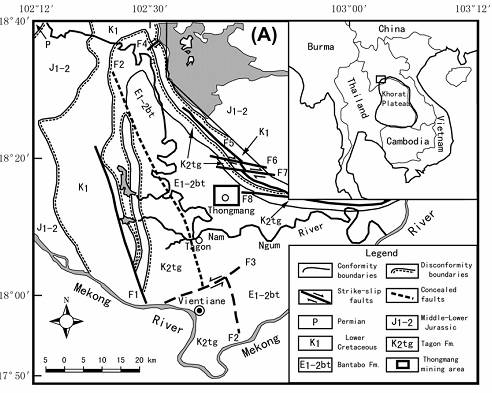The evaporites on the Khorat Plateau comprise one of the largest potash deposits in the world, and their origin has long been a controversial problem. Based on boron isotope measurements from borate as a good indicator to distinguish marine and nonmarine evaporites, the borates of potash layers were identified and the results were used to indicate the source of evaporites in the study area as representative of the whole Khorat Plateau. The results show that the main borates include boracite and hilgardite. The boracites occur as crystals and ooids with minor amounts of hilgardite aggregates. The range of δ11B values is from +21.30‰ to +32.94‰ (averaging +29.74‰) and falls in the range of marine borates. The δ11B values in the potash layer are seemingly variable because of the influence of fluvial influx when salts were precipitating. Although the composition of seawater has possibly been modified, the evidence from boron isotopic composition implies that the evaporites in the study area or in the whole Khorat Plateau are marine deposits.
 Location and geological map of study area. (Photo from the original paper) |